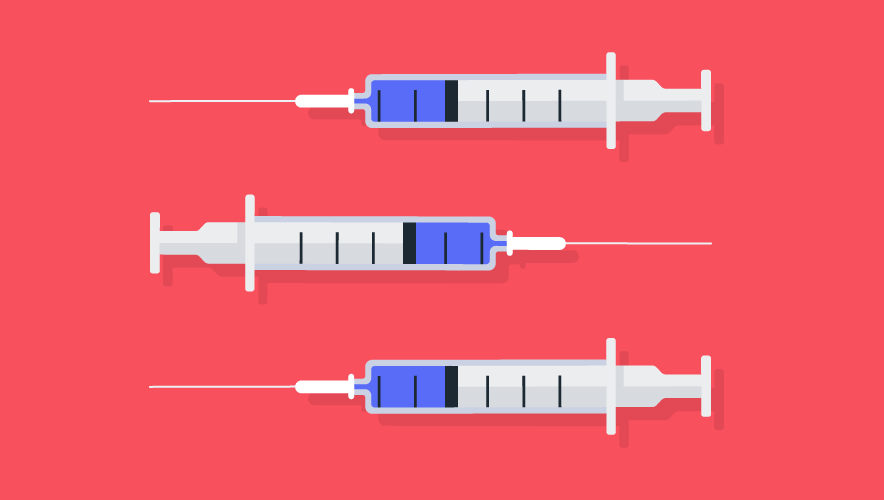Animal Sedative is ‘Emerging Drug Threat,’ White House Declares
Xylazine. If you haven’t heard of it before, you are not alone. But the White House’s Office of National Drug Control Policy (ONDCP) just identified the combination of fentanyl and xylazine as an “emerging drug threat”—a move that requires the Biden administration to create strategies to enhance law enforcement efforts, health interventions, and data collection to help combat its spread.
So, what is xylazine? It’s a powerful non-opiate sedative, analgesic, and muscle relaxant that was approved 50 years ago for use in veterinary procedures, primarily for horses and cattle, The New York Times reported. In humans, the addictive drug—also known as “Tranq”—slows breathing and heart rate, increases the risk of fatal overdose, and can produce severe, necrotic skin ulcers and abscesses.
The tranquilizer is increasingly being mixed into street fentanyl or amphetamines—primarily because it is cheap (in powdered form, one can order it for $6 to $20 per kilogram online) and brings its own addictive properties.
“At this low price, its use as an adulterant may increase the profit for illicit drug traffickers, as its psychoactive effects allows them to reduce the amount of fentanyl or heroin used in a mixture,” according to an October 2022 report from the U.S. Drug Enforcement Administration (DEA). “It may also attract customer looking for a longer high since xylazine is described as having many of the same effects for users as opioids, but with a longer-lasting effect than fentanyl alone.”
Xylazine withdrawal symptoms can be harsh—migraines, double vision, and anxiety so strong it causes a person to shake. Because it is not an opioid, the overdose-treatment drug naloxone does not reverse the effects of xylazine, the DEA said. This can complicate first responders’ and healthcare professionals’ treatment of drug overdose cases because the typical naloxone treatment may not be sufficient.
“While national overdose death numbers have flattened or decreased for seven straight months, xylazine is complicating efforts to reverse opioid overdoses with naloxone and threatens progress being made to save lives and address the opioid crisis,” according to the ONCDP.
Xylazine first appeared in the illicit drug supply in the Northeast United States—mostly in Philadelphia—before spreading. According to data from the DEA and the U.S. Department of Justice, detection of xylazine in forensic labs grew 112 percent in the West and 193 percent in the South from the start of 2020 through the end of 2021. The ONCDP noted that xylazine-positive overdose deaths increased by 1,127 percent in the South, 750 percent in the West, more than 500 percent in the Midwest, and more than 100 percent in the Northeast.
However, these numbers are likely soft. The DEA noted that because not all jurisdictions are routinely testing for xylazine in postmortem toxicology, and xylazine is not included in the U.S. Centers for Disease Control and Prevention’s (CDC) report of national fatal overdose statistics, some overdose deaths may not be counted.
In March 2023, the DEA released a public safety alert warning the public of a sharp increase in the trafficking on fentanyl mixed with xylazine—approximately 23 percent of fentanyl powder and 7 percent of fentanyl pills seized by the DEA in 2022 contained xylazine.
The White House designated xylazine, an addictive animal tranquilizer that is increasingly mixed into street fentanyl, as an “emerging drug threat.” The move requires the administration to enhance efforts to combat the drug, which can cause horrific wounds.https://t.co/ZpgmjiL7af
— The New York Times (@nytimes) April 12, 2023
As part of the response required by the emerging threat declaration, the ONDCP is convening an interagency group to inform a national response plan that includes testing, treatment, and supportive care protocols, comprehensive data systems (including on drug sourcing and supply), strategies to reduce the illicit supply of xylazine, and rapid research into how xylazine and other drugs interact.
Xylazine is also not listed as a controlled substance—unlike opioids or amphetamines—because it has legitimate and longstanding uses in veterinarian practices. Currently, the supplies of xylazine used in adulterant drugs are thought to come from China and, potentially, Mexico, India, and Russia, but they could also be coming from domestic manufacturers who sell to veterinarians.
“Preserving the drug’s status and access for veterinarians while shutting down supplies to dealers is a topic already under deep discussion,” the Times reported.










